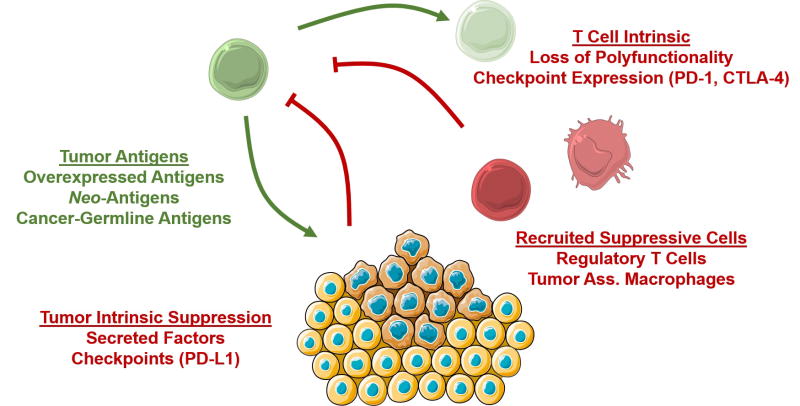
Figure 1.
T Cell Anti-Cancer Responses.
Tumor-specific T cells (green) can recognize over-expressed antigens, neo-antigens derived from germline mutations, or so-called cancer germline antigens expressed de novo during carcinogenesis. However, several processes exist to suppress anti-cancer responses. T cell-intrinsic mechanisms such as loss of functionality and expression of checkpoint proteins (PD-1, CTLA-4) lead to T cell exhaustion. Tumor-intrinsic mechanisms include secretion of suppressive factors such as TGF-B, or expression or checkpoint ligands. Furthermore, tumors recruit suppressive cells such as regulatory T cells and tumor-associated macrophages that further inhibit T cell responses.